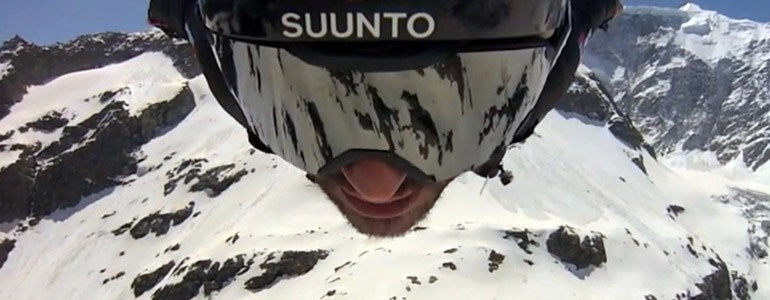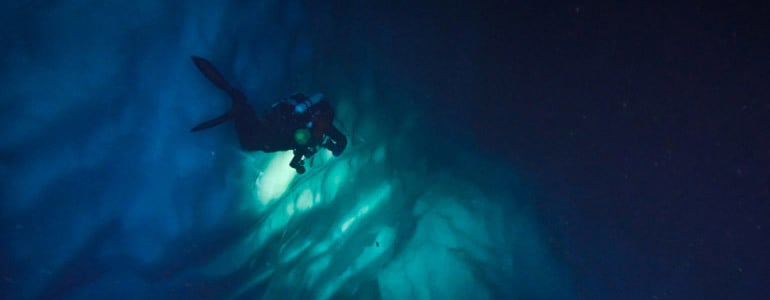

Suunto Blog

Ice-climbing film: Velocity on ice
The new ice-climbing film of Matthias Scherer and Tanja Schmitt is out now! Watch here but don't miss our Q&A with Matthias and filmaker Franz Walter, who explain what the movie is all about. Tell us about the film
MS: The idea was to make a film that shows ice climbing as a way of life in an artistic view. We did not just want to tell another story about hard lines being climbed. We tried to capture the moments that make the magic – and show the truth of ice climbing. Ice climbing is a true adventure. We love this aspect beside the fascination of the surreal beauty that frozen water creates.FW: As a storyteller I wanted to get to know Tanja and Matthias and their passion for ice-climbing. Distilling these insights into a short-film was what I was aiming for.
Where was it shot?MS: The full film was shot in Cogne in the Aosta valley on legendary lines like 'Repentance' or 'Lau Bij' to name just a few...
How challenging was it to film?
FW: Filming in winter and ice-climbing in particular is always a challenge. Avalanche danger, danger of falling ice, humidity all-over, snowfall, frozen fingers, you name it. Yet coming home at the end of the day with some beautiful shots makes it all worth it. Were there any really difficult moments?
FW: Yes there were, although it was not during the filming itself. The first hurdle to take with every project is to find the first supporter who says, “That's a great idea and I will help you make it happen.” The second hurdle came when we actually had driven to Cogne and had way too much snow and avalanche danger to be able to stick to our initial concept. So, over the course of a night we had to make the decision to either cancel the project or re-align things according to the given conditions, which is what we did. The third hurdle was to get the narration right. Although it might seem simple and straight-forward it took a lot of time to get there.Photo: ©Franz Walter What's next?
MS: We have a trip to Canada coming from October until the beginning of December where we will hit the early ice like the last seasons. Then back in Cogne we have a challenging project coming up. It will be a full day, a long day with lots of ice to be climbed! But most exciting are our plans for Norway. We can not say more – but when it happens, it will be big and full on! FW: As I am writing this I am sitting in my van, heading north to Scandinavia for a three-week road trip, fully loaded with whitewater kayaks, climbing gear and hiking boots. We will continue doing our very best producing small, beautiful, thoughtful stories from the outdoors.

Tutorial Tuesday: Find a GPS signal more quickly
To receive a GPS signal your Suunto watch needs to locate satellites that are orbiting the Earth. The better the watch knows where the satellites are located, the quicker it will receive the signal.
Since the satellites are moving constantly, the new locations of the satellites need to be synced to your watch. Simply put, to find the satellites quicker, sync your watch regularly with Suunto app.
Suunto app sync the latest, seven-day satellite orbit forecast to your watch so it knows where to look. If you want to optimize and find the signal quickly, sync the watch as close to your activity as possible.
The data that is synced to your watch is global. So even if you sync your watch in New York and start your run 12 hours later in Chamonix, there is no need to re-sync.
Image: © Bruno LongGet support for your Suunto product at support

Video: Diving under the ice
For the Under the Pole team journeying up Greenland's west coast, the last few weeks have offered spectacular diving – and some interesting culinary discoveries. Click on the video below to see for yourself.
The French team of explorers and scientists made their way from Uummannaq to Qaanaaq, one of the most northerly villages on earth. Along the way they sampled some local cuisine – guts rolled around skin and fat – and have encountered much wildlife, including various seals and whales. A highlight was a scooter assisted dive under an iceberg.“Navigating the wild coasts is wonderful,” says Ghislain Bardout, expedition chief. “Last month we sailed throughout Melville’s Bay, the least habited and wildest region of Greenland’s West Coast. We would have loved to stay a couple of weeks more in this magic place.” The team are now at Qaanaaq's Bay where they will prepare to hibernate on board their ship, the WHY and spend the winter.

The wingsuit flight you can't miss
This is a wingsuit flight you have to see. Patrick Kerber leaps from the summit of the Ochs at 3,895 m in the Bernese Oberland for a 185 km/h flight in the Swiss Alps.Check out the video and prepare to be inspired. But the jump is only part of the story. This wasn't just an extraordinary BASE jump. This was para-alpinism. To get to the take-off site, Kerber first had to had to climb over the Fiescherhorn (4,049 m). After staying at the Mönchsjoch hut, he and partner Simon Wandeler set off at 4am. “The hardest part was to climb and cross over on the Gross Fiescherhorn. There was lots of ice and snow it took eight hours of climbing to reach the exit point. The jump-off but was covered with a lot of snow,” he adds, “so we had to dig it all out and prepare it for a good push.”What makes the jump unique is that Kerber did not have any external support and BASE jumped with all his gear.“My goal was to approach this project only with my buddy and to fly all the gear that we brought up back down – that meant crampons, ice axe, harness, laser device to measure the jump, karabiners, ice screws etc. All this stuff had to find space in the suit and this is only possible with new pockets that are integrated in the wings.”
He adds: “This is though a big deal when it comes to aerodynamics. So after climbing up for quite some time and also getting tired, you have to make sure that all the technical aspects are correct too or the suit will not fly the right way.” “When you plan a project like this, you can only take and bring the most important gear with you, but also enough to be always safe.”Naturally, that included Kerber's Suunto Ambit2.

A WETSUIT WILL MAKE YOU FASTER
Wetsuits were invented to keep you warm – but they have another positive side effect: they make you faster, too. The buoyancy provided by the suit keeps you in a better swimming position – especially if the swim is your weak spot – and helps save your legs for battle in the cycling and running stages.
Swimmers with competition experience often worry the wetsuit will hinder their range of motion – but that’s a mistake. Tests with and without wetsuits have shown a time saving of five to ten seconds per hundred meters, with wetsuit. Simply put, a full-sleeve suit will help any swimmer go faster.
Like with any athletic gear, fit is important. A suit that’s too big is uncomfortable, slow and cold. Too small and it restricts movement and circulation, making your muscles work harder than they need to. But remember – it’s easier to choose a suit that is too big than one that is too small. Try before you buy, and, if you can, get a swim in. Some triathlon shops have a pool on site, and some teams have events where various suits can be tested.
High-quality wetsuits made specifically for triathlon or long-distance swimming are optimized for buoyancy, fit and range of motion, with different materials in different parts of the suit. A thinner, high-stretch material in arms, shoulders and underarms improves flexibility, while a thicker material in the torso and legs optimizes the swim position.
Top tip? Place your foot in a plastic bag before putting on; it will slide through easily without the risk of tearing the suit.
When choosing tri-ready rubber, don’t forget the transition (T1) after the swim. A zipper for quick and easy removal can shave valuable seconds (or more, if you’re clumsy) off your time! Many athletes also opt to cut a few cm off at the cuffs and ankles to make them easier to remove.
The last thing to remember about wetsuits for triathlons? You can’t always use them. In warm waters, many races don’t allow them (a definite plus for those who are strong swimmers). In the Ironman races, the temperature limit for wearing a suit is 24.5 degrees Celsius (76.1 degrees Fahrenheit) – but generally, temperature limits for wearing wetsuit differ based on the distance and race. So the biggest tip about suits? Make sure they’re allowed before you cross the start line!
Read also Conrad Stoltz’s open water swimming tips

Summer arrives for the Under the Pole team
“Summer arrives, icebergs melt, mosquitoes are everywhere!” So begins the latest newsletter from the Under the Pole team. The expedition, which consists of explorers, scientists and divers, is journeying up the coast of Greenland in a bid to chart the west coast, both from above and below the waterline.
The team set off from France at the beginning of January on the 18m schooner WHY and spent the month of June moored in Ummannaq, which means 'heart shape' in Greenlandic.
All the team on (and in) the ice pack - © Lucas Santucci / Under The PoleThere the team carried out some decompression research. Says Ghislain Bardout: “We performed nine dives with similar profiles (80 m 1hr 30 immersion) which were 'listened' to afterwards via a Doppler device by Julien Hugo, scientist at BF Systèmes and specialist in measuring circulating bubbles concerning diving decompression. “The study is part of a scientific collaboration that aims to create a better understanding of decompression physiology in the arctic environment.”
Suunto dive computers take a rest in between research dives. © Lucas Santucci / Under The PoleAt the time of writing, the team were out of communication, en route to Upernavik and across the famous Melville Bay where they hoped to wait for the arrival of narwhals – tusked whales. The plan is then to head to Qaanaaq where they will over-winter. Main underwater photo: © Ghislain Bardout / Under The Pole
Check out the team's latest webclip here.





























































